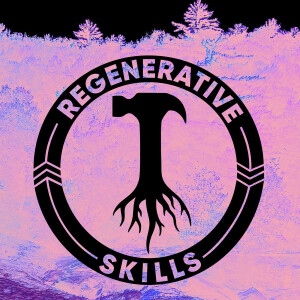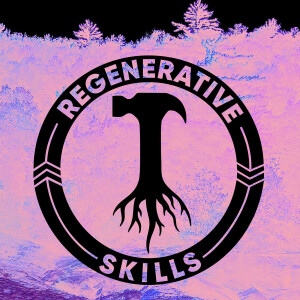
Regenerating coral reefs with art and community, with Celia Gregory of the Marine Foundation
 2020-10-30
2020-10-30
Welcome back friends and family to this ongoing series on waterway regeneration. We’ve covered so many approaches to this subject up until now, and over the last two weeks I’ve been exploring regenerative solutions to the environmental degradation of marine ecosystems. Today we’ll be looking closely at some creative ways of protecting and even reseeding coral reefs in my interview with Celia Gregory.
Celia is the founder of the Marine Foundation, an Eco-arts organisation that uses art for change - not only in awareness and education, but also directly on the restoration of coral reef habitats, fish stocks, and associated provision of livelihood.
Celia has over twenty-five years directing and managing a varied selection of creative projects around the world. Having completed her padi pro dive master in Costa Rica in 2004 she was inspired to take her creative process under the sea, developing ‘art in symbiosis with marine conservation. She created “The Living Sculptures In the Sea” program, an international series of underwater sculptures and a creative collaboration of local communities, conservation organisations, science and the creative arts.
Through The Marine Foundation Celia has successfully developed projects in several international locations, facilitating programs for local communities.
Now, I first got to know Celia as a co-instructor with me on the Ecosystem Restoration Design course with Gaia Education, and I was fascinated by her unique approaches to community collaboration through culturally representative art.
In this interview, though we certainly talk a lot about specifics of coral habitat restoration and the urgent need to create reserves and sanctuaries to revive coastal areas that have been destroyed, we also focus a lot on Celia’s remarkable stories from the communities that she’s worked with to accomplish these projects.
I myself have worked mostly with local communities in countries that were foreign to me and I really connected to the compassionate and inclusive approach that Celia speaks to from her own experience. I’ve always found that the community aspect of regenerative projects is the most overlooked in the design and planning stage. While some enterprises eventually find success with weak community integration, the ones that create long lasting and holistic solutions are the ones that are built around the needs, wants, and cultural nuance of the places where they’re based. Ownership and responsibility centered around the people of that place are points that Celia makes and that I’ve learned to emphasize in all of the projects that I work with too.
This is one of my favorite chats from this series, and I hope it encourages you to reflect and re-evaluate as much as it did for me.
Resources:
https://www.themarinefoundation.org/
https://youtu.be/l2OlicbbBsk
https://vimeo.com/397072200
view more
More Episodes
012345678910111213141516171819
Create your
podcast in
minutes
- Full-featured podcast site
- Unlimited storage and bandwidth
- Comprehensive podcast stats
- Distribute to Apple Podcasts, Spotify, and more
- Make money with your podcast
It is Free
- Privacy Policy
- Cookie Policy
- Terms of Use
- Consent Preferences
- Copyright © 2015-2024 Podbean.com







